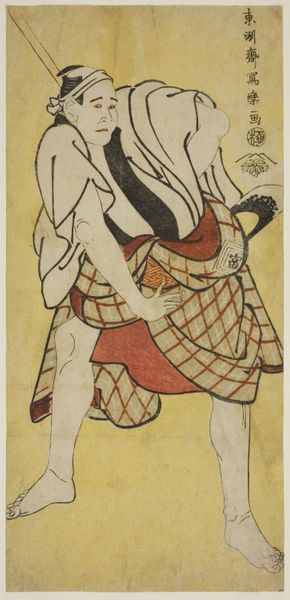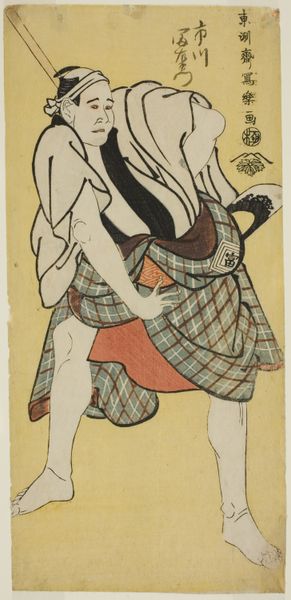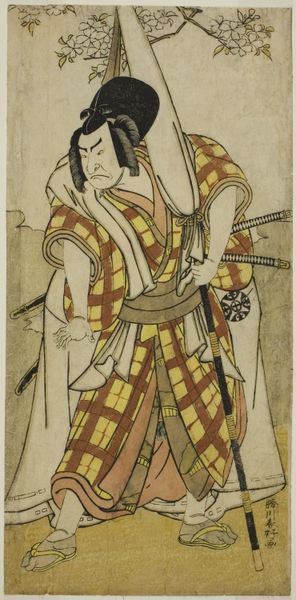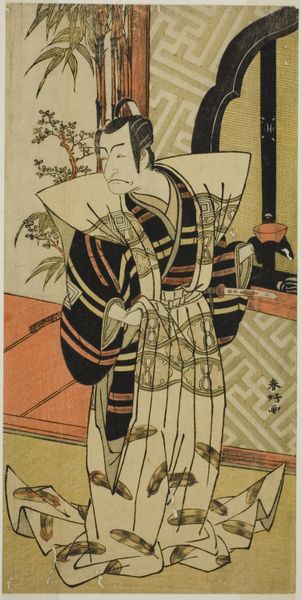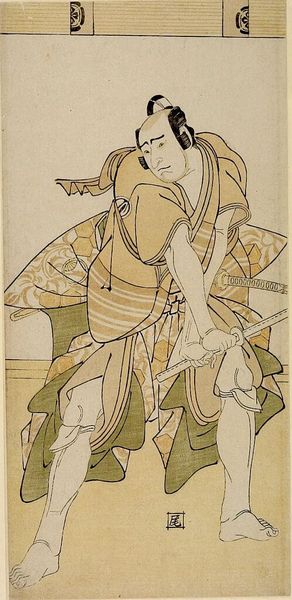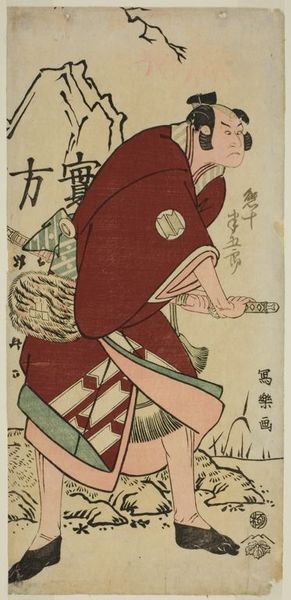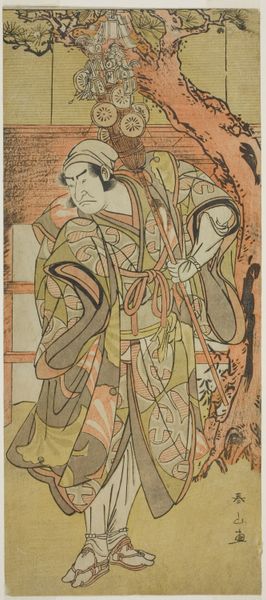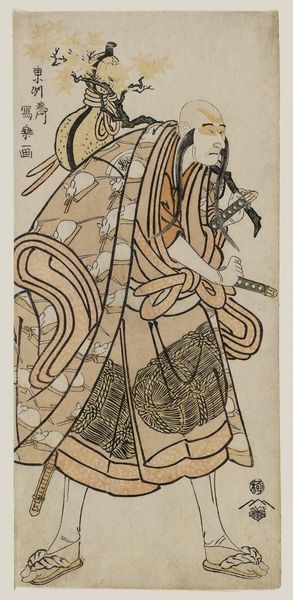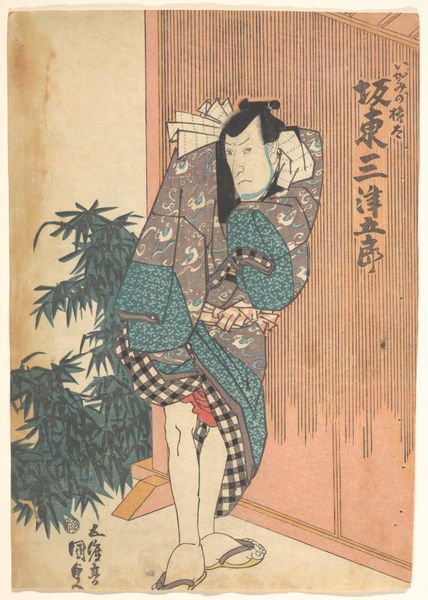
print, woodblock-print
#
portrait
# print
#
ukiyo-e
#
woodblock-print
Copyright: Public domain
Tōshūsai Sharaku created this woodblock print of Ichikawa Tomiemon as Inokuma Monbei in Japan in the mid-1790s. Sharaku's prints offer valuable insight into the cultural landscape of Edo-period Japan, particularly the vibrant world of Kabuki theater. Kabuki was a popular form of entertainment, but was also subject to social and political regulation. The actors, like Ichikawa Tomiemon here, were celebrities, but they also occupied a liminal space in society, often subject to scrutiny. Sharaku's portraits of these actors were not always flattering and are characterized by a bold realism that was somewhat unusual for the time, which may explain why his career was so brief. His prints, published by Tsutaya Jūzaburō, a prominent figure in the publishing world, provide a glimpse into the complex interplay between art, commerce, and social status in Japan. To fully appreciate Sharaku's work, we can look to theater programs, censorship records, and biographical details of the actors and publishers involved. This is how we can begin to understand the social context that shaped both the production and reception of these captivating images.
Comments
No comments
Be the first to comment and join the conversation on the ultimate creative platform.
